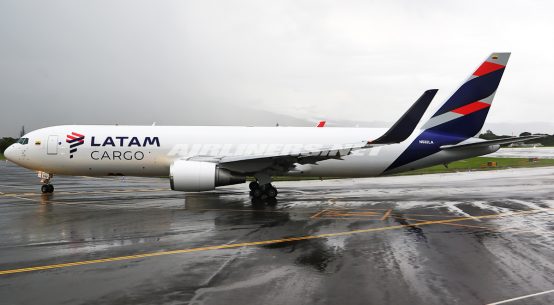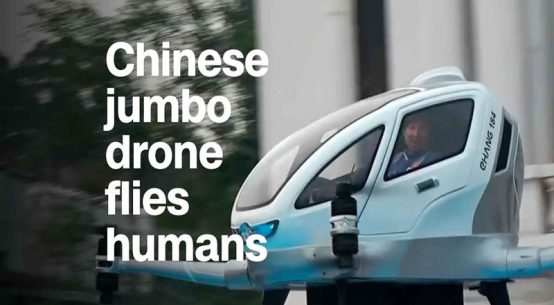
Donald Trump with US car industry leaders. The president has repeatedly stated his frustration at the difference between US tariffs on passenger vehicles and higher duties elsewhere. Photograph: Reuters
The review could result in tariffs, akin to similar investigations into steel and aluminum imports that concluded earlier this year.
The U.S Commerce Department on Wednesday started an investigation into the national security impacts of global automobile imports, one day after China announced it was cutting automotive tariffs from 25 percent to 15 percent, effective July 1.
“There is evidence suggesting that, for decades, imports from abroad have eroded our domestic auto industry,” Commerce Secretary Wilbur Ross said in a statement. “The Department of Commerce will conduct a thorough, fair and transparent investigation into whether such imports are weakening our internal economy and may impair the national security.”
The investigation is being conducted under Section 232 of the Trade Expansion Act of 1962, as amended.

This week’s U.S.-initiated auto investigation and tariff reduction by China offers a glimpse into how the trade trajectories of two global economic powers are unfolding at a time when China has taken certain steps toward greater outward economic engagement, and the U.S. has aimed its trade policy largely toward protecting domestic industry.
Section 232 of the Trade Expansion Act of 1962 authorizes the president to assess trade remedies, including tariffs and/or quotas if imports investigated under the statute are found to harm national security.
President Donald Trump ordered global tariffs of 25 percent on steel and 10 percent on aluminum pursuant to other Section 232 investigations that concluded earlier this year, exempting a handful of trading partners.
Steel and aluminum tariff exemptions for the EU, Canada and Mexico are set to expire on June 1.
The United States is collecting no Section 232 tariffs on imports of steel from South Korea and no such tariffs on both steel and aluminum imported from Argentina, Australia and Brazil, after reaching agreements with those nations.
Ross sent a letter to Defense Secretary James Mattis informing him of the initiation of the Section 232 investigation into automobile imports, Commerce said in a statement.
The U.S. Chamber of Commerce, Senate Finance Committee Chairman Orrin Hatch, R-Utah, and Unifor, a Canadian union that represents auto workers, were among those who reacted adversely to news of the investigation.
“Commerce’s 232 investigation into the national security implications of trade in automobiles, trucks and auto parts is deeply misguided,” Hatch said in a statement. “For most Americans, cars are the second largest purchase they make, after their homes. Taxing cars, trucks and auto parts coming into the country would directly hit American families who need a dependable vehicle, whether they choose a domestic or a global brand.”
Commerce noted that imports compose 48 percent of cars sold in the United States, compared with 32 percent 20 years ago, and U.S.-owned vehicle manufacturers in the United States account for “only 20 percent of global research and development in the automobile sector, and American auto part manufacturers account for only 7 percent in that industry.”

Chamber CEO Tom Donohue said in a statement that automobile production has doubled over the last 10 years, as it exports more than any other U.S. industry, and employs 50 percent more Americans than it did in 2011. “These tariffs risk overturning all of this progress,” he said.
China’s tariff lowering coincided with the conclusion of U.S. and Chinese trade negotiations in Washington May 17-18, which yielded a “consensus” on “taking effective measures” to reduce the U.S. trade deficit in goods with China, as Beijing pledged to significantly boost purchases of U.S. goods and services, including “meaningful increases” in U.S. agriculture and energy exports, according to a White House statement.
The two sides agreed to continue high-level engagement and to work to resolve economic and trade concerns in a “proactive manner,” after the bilateral talks were sparked by a separate tariff threat by Trump in March following the conclusion of an investigation into China’s commercial practices, including intellectual property-related practices.
The Trump administration has suspended its tariff threats against China, pursuant to Section 301 of the Trade Act of 1974, for the time being.
Chinese President Xi Jinping at an April forum pledged to reduce China’s auto tariffs.
Still, China’s reduction of auto tariffs was “clearly related” to recent trade talks with the U.S., as Beijing was showing an effort to take a serious approach to the Trump administration on its trade demands, especially because the administration has focused heavily on automotive trade, said Center for Strategic and International Studies Scholl Chair in International Business Bill Reinsch.
But the tariff reduction may benefit China’s regional partners South Korea and Japan more than the United States, as most U.S.-owned automakers have manufacturing facilities in China, and the U.S. doesn’t export many finished cars to the nation, Reinsch said.
Eric Miller, president of trade consultancy Rideau Potomac Strategy Group, said China’s tariff reduction won’t affect many North American auto exports outside of some luxury brands that already export finished vehicles to the country.
“No North American-assembled automobiles are going to go into the Chinese market that were not going into that market already, just because of prices and so on,” he said. “You’re looking at a situation where the Chinese have scored an optical win because everyone’s talking about it as progress, but it does not do anything to change the facts on the ground.”
China probably wouldn’t have cut its auto tariffs if the bilateral talks didn’t take place, “but that would just simply be because they wouldn’t have bothered giving away things for free,” said Bruce Hirsh, principal at trade consultancy Tailwind Global Strategies.
It’s “probably too soon to say” whether the conclusion of the most recent trade talks between the two countries and the U.S.’s dropped tariff threat indicate a return to more normal bilateral trade ties, Hirsh added.
“It’s still an open question as to whether the decision to hold off on moving forward on Section 301 measures against China is because they’re satisfied with the deal, or if it’s really more a function of the fact that the timing is poor with [North] Korea and with the midterm elections,” he said.
Trump on Thursday morning submitted a letter to North Korean leader Kim Jong Un to cancel a denuclearization summit scheduled for June 12 in Singapore among delegations from the two countries and China, as Trump cited “tremendous anger and open hostility” displayed very recently by Kim.
The United States’ suspended tariff threat was in large part designed to induce the Chinese to lean on North Korea to make a denuclearization deal, and the volatility of the security dynamic between the three countries clouds the United States’ and China’s trade relationship, Miller said.
“Now that it’s become clear that the North Koreans are not going to make a deal and they’ve basically blown up the idea of the summit, the U.S. has little incentive to be nice to the Chinese,” he said.
As China announced measures to open its auto market, the U.S. move to protect domestic auto manufacturers through initiating the Section 232 investigation could have implications for the ongoing NAFTA negotiation, Reinsch and Miller said.
Starting the 232 investigation could be an attempt by the U.S. to “bully” Mexico and Canada into folding to the Trump administration’s demands for the NAFTA auto chapter, Reinsch said. “But I don’t think it’ll work. The stakes are higher than that. And watch Trump on China; watch him on [South] Korea. He has the tendency to take the short-term market concession and run.”
The U.S. and South Korea concluded a deal in principle to update their free trade agreement (KORUS) in March, with some of the clearest U.S. wins entailing a doubling of market access for U.S. automotive exports not required to be subject to South Korean safety standards, as well as an extension of the phaseout period for U.S. tariffs on pickup trucks from South Korea.
Automotive provisions remain among the most contentious issues that must be ironed out before NAFTA parties settle on an updated agreement.
Among other things, the U.S. has pressed Mexico to raise the minimum wage for its auto workers and for a higher North American value content threshold for automobiles to qualify for NAFTA benefits.
“As a trusted trading partner I think it’s clear that Canada is not a threat to American security,” Unifor National President Jerry Dias said in a statement. “What’s unclear is the motivation or the actual target of potential tariffs. Is this a NAFTA bargaining tactic or is Trump just using Section 232 as a political tool to deliver one of his so-called ‘wins’ in the absence of a new NAFTA prior to the U.S. midterm elections?”
“Negotiators continue to have discussions about NAFTA,” an Office of the U.S. Trade Representative spokesperson said in a statement to American Shipper on Thursday. “No formal meetings at the ministerial level are currently scheduled, but talks are continuing. U.S. negotiators remain fully engaged.”
Canada and Mexico might take account of the Section 232 automobile investigation and then gamble that the U.S. will agree to terms that involve settling on U.S.-proposed auto provisions in exchange for dropping its more controversial proposals, including a weakened investor-state dispute settlement system and for the agreement to sunset after a certain period if the countries don’t affirmatively approve of an extension, Reinsch said.
He added that U.S. Trade Representative Robert “Lighthizer doesn’t want to do that, but it’ll be up to the president in the end.”
Even if the United States’ Section 232 investigation is targeting Mexico, where a significant amount of auto imports are derived, it will have “real spillover effects” to other parts of the world, especially as tariff exemptions on steel and aluminum are set to expire on June 1, Miller said.
There’s a sense in the trade policy community that the U.S. is using its investigation, in part, as leverage in the NAFTA negotiation as well as to clamp down on imports of auto parts from China to the North American region, he said.
“By sticking your stick in the hornet’s nest of 232 for autos, at the same time as you’re about to confirm the worst-case outcome for 232 for steel and aluminum, this is going to cause the Europeans and others in Asia to take a very hard line toward the U.S. on trade,” Miller said.








